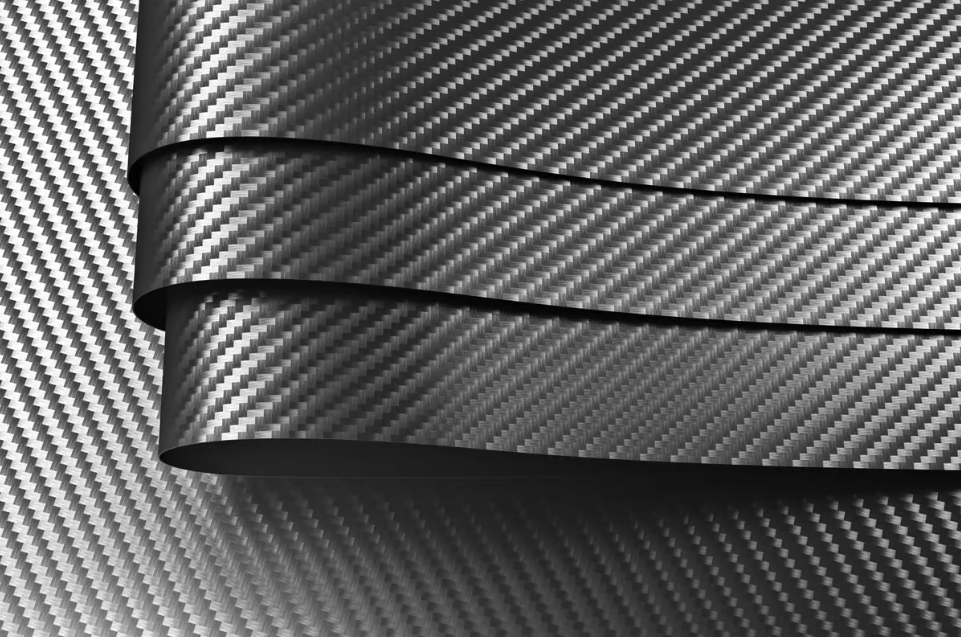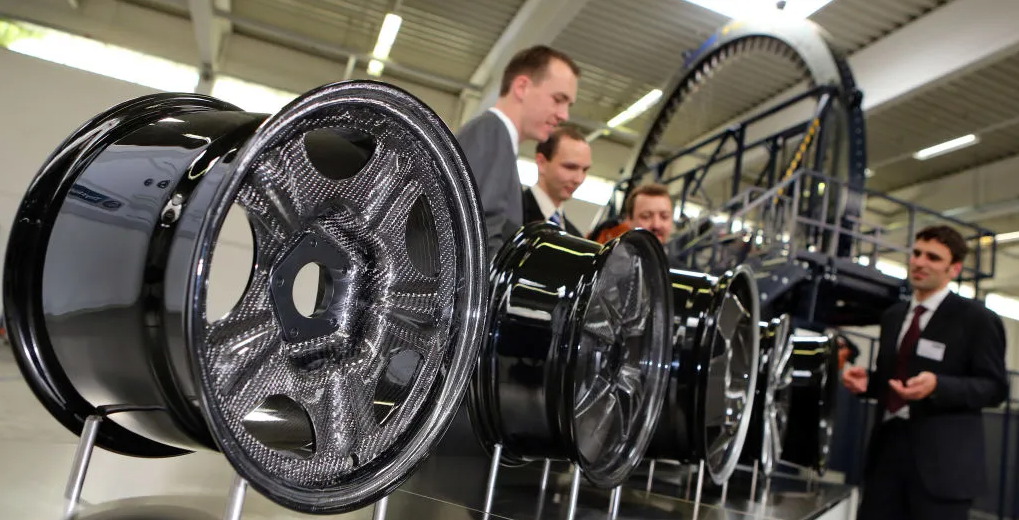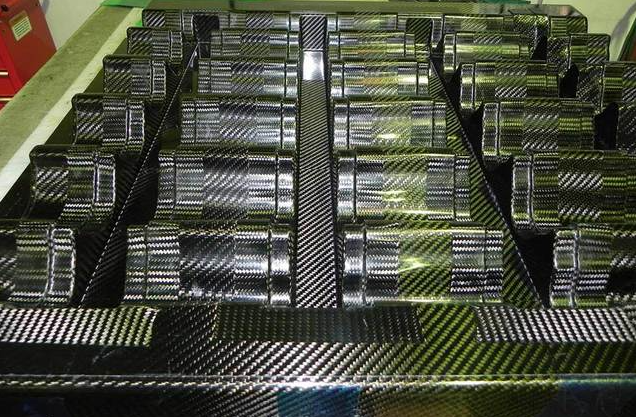Making a carbon fiber mold is cool and creative. Shape a tough, light mold for carbon fiber. It’s strong and can do many things. Whether it’s planes, cars, or sports gear, learning mold-making lets you make top-notch stuff. This guide shows each step, with easy directions and tricks. Ready to start making awesome carbon fiber parts? Let’s go!
What is carbon fiber mould?
A carbon fiber mold is a strong and lightweight tool used to shape carbon fiber into specific forms. It’s like a template that gives carbon fiber its desired shape.
Imagine it as a cookie cutter but for carbon fiber. The mold is usually made from materials like aluminum or composite materials, which are durable and can withstand the high temperatures used in carbon fiber molding.
To create a carbon fiber part, you place layers of carbon fiber fabric inside the mold. Resin, which is like glue, is then added to bind the fibers together. This combination is then put under pressure and heat to cure and harden.
Once curing completes, open the mold and take out the formed carbon fiber part. The result is a strong, rigid, and precisely shaped carbon fiber component.
Various industries, such as aerospace, automotive, and sports equipment, use carbon fiber molds. They help make products that are both strong and lightweight, which is a winning combo.

What is carbon fiber mainly used for?
Carbon fiber is a remarkable material that finds its way into numerous industries, owing to its impressive combination of strength and lightness. Let’s take a closer look at some of the main areas where carbon fiber shines:
Aerospace Marvels:
In the aerospace industry, carbon fiber plays a starring role. It’s used to craft aircraft components, making them robust enough to withstand the demands of flight while ensuring they remain light enough to enhance fuel efficiency.
Automotive Advancements:
Automobiles benefit immensely from carbon fiber. It’s employed in creating body panels and frames, shedding weight and consequently improving both performance and fuel economy.
Sports Gear Enhancement:
Sports enthusiasts can thank carbon fiber for their high-performance gear. Bicycles, tennis rackets, and even sports helmets leverage their strength to endure intense usage without adding unnecessary bulk.
Medical Breakthroughs:
Even the medical field reaps the benefits. Carbon fiber’s strength and compatibility with the body make it invaluable for crafting prosthetics and implants that stand the test of time.
Reinforcing Infrastructure:
Carbon fiber isn’t limited to personal items; it’s also bolstering our infrastructure. Reinforced concrete and steel components, infused with carbon fiber, make structures like buildings and bridges more durable and resistant to wear.
Speed on the Racetrack:
Carbon fiber’s influence extends to the world of racing, where Formula 1 cars and other racing vehicles utilize its properties to enhance speed and safety measures.
Artistic and Design Innovations:
Art and design enthusiasts appreciate carbon fiber’s modern touch. Sculptures, furniture pieces, and architectural elements embrace this material to create unique and contemporary aesthetics.
Everyday Elegance:
Carbon fiber discreetly infiltrates our daily lives, gracing items like wallets, phone cases, and laptop shells. Not only do these items look stylish, but they also benefit from the material’s protective properties.
What material do people use for a carbon fiber mold?
Creating carbon fiber parts involves the use of molds, and the choice of material for these molds is critical. Here are the key considerations for selecting the ideal material:
Durability Matters:
The material used for carbon fiber molds must be robust enough to withstand repeated use and the pressures of molding processes.
Heat Resistance is Key:
Given the high temperatures used in carbon fiber molding, the chosen material should have excellent heat resistance to prevent warping or damage.
Smooth Surface Finish:
A smooth mold surface translates to a smoother finish on the carbon fiber part. Materials with low friction properties ensure easy part release and a polished surface.
Thermal Conductivity:
Good thermal conductivity helps distribute heat evenly during curing, reducing the risk of uneven curing or hotspots.
Dimensional Stability:
The mold material should maintain its shape and dimensions even when subjected to high temperatures and pressure.
Material Compatibility:
Choosing a material that doesn’t react with the resin used in carbon fiber molding is crucial to ensure proper curing and part quality.
Weight Considerations:
While the mold needs to be durable, heavy molds can be cumbersome and affect the overall molding process. Balance between durability and weight is important.
Ease of Machining:
The mold may need intricate designs or modifications.
We prefer a material that is easy to machine or shape for such cases.
Cost-effectiveness:
Balancing quality with cost is essential. We prefer materials that meet the requirements without costing too much.

How to make carbon fiber mould? Step by step
Designing a carbon fiber mold can seem complex, but breaking it down into steps makes it achievable. Here’s a friendly guide to help you get started:
Step 1: Design and Planning
Decide on the shape and dimensions of your carbon fiber part. Sketch out the mold design on paper or using design software.
Step 2: Choose the Mold Material
Select a mold material based on factors like durability, heat resistance, and ease of machining. Common choices include aluminum, composite materials, steel, or silicone.
Step 3: Build the Mold Structure
Use your design to create a physical mold structure. For composite molds, layer epoxy resin and fiberglass to build up the mold shape.
For metal molds, you have to involve machining or casting.
Step 4: Finishing Touches
Smooth the mold surface for an even finish on your carbon fiber part. Ensure you polish the mold and remove any imperfections.
Step 5: Apply Mold Release Agent
Apply a release agent to the mold to ensure easy removal of the carbon fiber part after curing.
Step 6: Prepare Carbon Fiber Fabric
Cut the carbon fiber fabric into the required shape and size. Lay the fabric layers inside the mold, ensuring they conform to the mold’s contours.
Step 7: Mixing Resin
Mix the resin according to the manufacturer’s instructions. This resin acts as the “glue” that binds the carbon fiber layers together.
Step 8: Apply Resin
Evenly distribute the resin onto the first layer of carbon fiber inside the mold. Use brushes or rollers to make sure it’s spread uniformly.
Step 9: Layering and Curing
Add subsequent layers of carbon fiber fabric, applying resin between each layer. Press the layers firmly to remove air bubbles. Place the mold in an oven or under heat lamps for curing.
Step 10: Demolding
Once the resin has cured and the carbon fiber part has hardened, carefully open the mold. Gently remove the cured carbon fiber part from the mold.
Step 11: Post-Processing
Trim any excess material and sand down rough edges. Your carbon fiber part might need additional finishing, like painting or clear coating.
Step 12: Enjoy Your Creation
Now you have a strong and lightweight carbon fiber part ready for use! Whether it’s for aerospace, automotive, or any other field, your creation is a testament to your craftsmanship.

FAQs
What is a carbon fiber mold used for?
A carbon fiber mold is a tool to shape carbon fiber into specific forms, commonly used in industries like aerospace and automotive.
How is a carbon fiber mold made?
To make a carbon fiber mold, design the shape, build the structure using materials like aluminum or composite, and ensure a smooth surface.
Can I make my carbon fiber mold?
Yes! With the right materials and steps, creating a carbon fiber mold is achievable, although it requires practice and patience.
What are common materials for carbon fiber molds?
Aluminum, composite materials, steel, and silicone are common choices due to their durability, heat resistance, and machining ease.
What’s the process of using a carbon fiber mold?
First, apply a release agent to the mold. Then, layer carbon fiber fabric and resin, cure, open the mold, and finish the part as needed.

